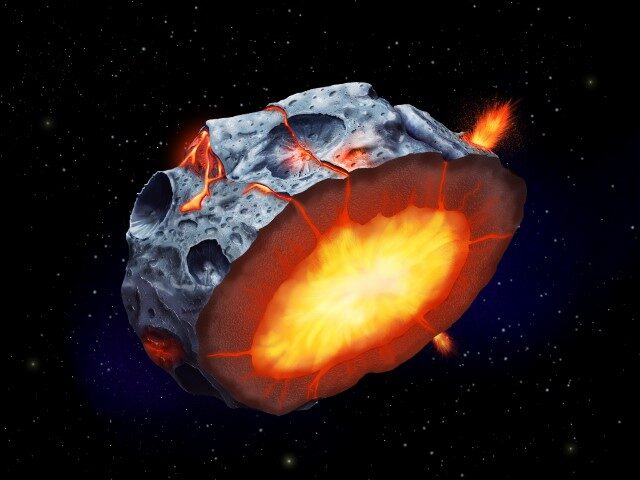An asteroid the size of a three-story building will pass over the Earth’s atmosphere a little more than halfway between our planet and the moon on Sunday.
The asteroid, called 2023 MU2, is estimated to be between 13 and 29 feet in diameter, and it will be passing within 134,000 miles of Earth — just 60 percent of the average distance away from the moon, according to Space.com. The asteroid will make its closest approach June 25 at 7:19 ET, but it does not pose any risks, scientists report. The Virtual Telescope Project will be offering a free livestream of the asteroid starting Sunday at 7:00 p.m. ET.
MU2 is not the only asteroid passing Earth this weekend. Friday night, an asteroid the size of a car passed Earth at 77,000 miles, and on Saturday a bus-sized asteroid will be passing 162,000 miles away. Neither are causes for concern, NASA scientists say.
An asteroid roughly the size of an automobile will hit Earth’s atmosphere about once a year, according to NASA. The asteroid will turn into a fireball and burn up before hitting the Earth’s surface.
Last year, NASA crashed an object into the stadium-sized Dimorphous asteroid to change its trajectory. The asteroid posed no risk of hitting Earth, but the Double Asteroid Redirection Test (DART) marked “humanity’s first time purposely changing the motion of a celestial object.”

This imagery from NASA’s Hubble Space Telescope from Oct. 8, 2022, shows the debris blasted from the surface of Dimorphos 285 hours after the asteroid was intentionally impacted by NASA’s DART spacecraft on Sept. 26. (Credits: NASA/ESA/STScI/Hubble)
“This result is one important step toward understanding the full effect of DART’s impact with its target asteroid,” Lori Glaze, director of NASA’s Planetary Science Division at NASA Headquarters in Washington, said. “As new data come in each day, astronomers will be able to better assess whether, and how, a mission like DART could be used in the future to help protect Earth from a collision with an asteroid if we ever discover one headed our way.”

COMMENTS
Please let us know if you're having issues with commenting.